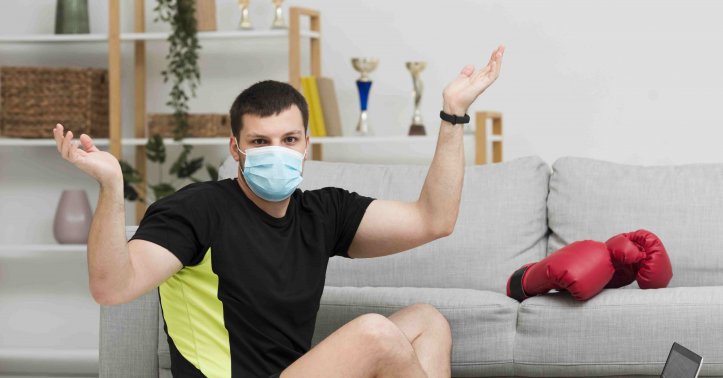
Combatting pollution at home
Combatting pollution at home is a powerful and practical way to improve your health and well-being. The term "pollution" indoors is often called Indoor Air Quality (IAQ).
Here is a comprehensive guide to identifying, tackling, and preventing common sources of pollution in your home.
Understanding the Enemy: Common Sources of Home Pollution
-
Particulate Matter (PM2.5/PM10): Dust, pollen, pet dander, mold spores, and smoke.
-
Volatile Organic Compounds (VOCs): Gases emitted from cleaning supplies, paints, air fresheners, cosmetics, and new furniture or building materials.
-
Biological Pollutants: Mold, mildew, dust mites, bacteria, and viruses.
-
Combustion Pollutants: Carbon monoxide (CO) and nitrogen dioxide (NO2) from gas stoves, furnaces, fireplaces, and tobacco smoke.
-
Chemical Pollutants: Pesticides, lead (from old paint), and asbestos (in older homes).
The Action Plan: Strategies to Combat Home Pollution
1. Source Control: The Most Effective Strategy
Stop pollution at its source.
-
Ventilate when cooking: Always use your stove's exhaust fan, which vents outdoors. If you have a gas stove, this is crucial for removing NO2 and CO. Open a window if possible.
-
Choose low-VOC products: Look for "Low-VOC" or "Zero-VOC" labels on paints, varnishes, and adhesives.
-
Be mindful of cleaning products: Opt for natural cleaners like vinegar, baking soda, and castile soap. If you use harsh chemicals, ensure good ventilation.
-
Ban smoking indoors: Enforce a strict no-smoking policy inside your home.
-
Inspect and maintain appliances: Have gas-fired appliances (furnace, water heater, dryer) inspected annually to prevent CO leaks.
-
Remove shoes at the door: This prevents tracking in pesticides, lead-laden dust, and other outdoor pollutants.
2. Ventilation: Dilute the Pollutants
Bring fresh air in to flush stale, polluted air out.
-
Open windows regularly: Even for just 10-15 minutes a day, cross-ventilation (opening windows on opposite sides of the home) is highly effective.
-
Use exhaust fans: Run bathroom fans during and for 20 minutes after showers to remove moisture and prevent mold. Use kitchen exhaust fans while cooking.
-
Consider an Energy Recovery Ventilator (ERV) or Heat Recovery Ventilator (HRV): For modern, tightly sealed homes, these systems bring in fresh air while conserving energy by transferring heat/cool between the incoming and outgoing air streams.
3. Air Purification: Capture What's Left
Use technology to remove pollutants from the air.
-
Use a HEPA Air Purifier: A High-Efficiency Particulate Air (HEPA) filter is the gold standard for removing particulate matter (dust, pollen, dander, mold spores). Place one in your bedroom and/or main living area.
-
Key Tip: Ensure the purifier is sized for the room (check the CADR rating) and replace filters as recommended.
-
-
Upgrade your HVAC Filter: If you have forced-air heating/cooling, use a high-quality filter (like a MERV 13 rating) to capture fine particles throughout your home. Check that your system can handle the higher-rated filter first.
4. Humidity Control: Prevent Mold and Dust Mites
Maintain ideal humidity levels (30-50%).
-
Use a Dehumidifier: Essential for basements and in humid climates to prevent mold growth. Empty and clean it regularly.
-
Use a Hygrometer: A cheap device that measures humidity so you can take action if levels are too high.
-
Fix leaks promptly: Repair leaky pipes, roofs, and windows to prevent water damage and mold.
5. Natural Solutions: The Green Approach
-
Houseplants: While they have a minimal effect on VOC levels compared to ventilation, some plants (like spider plants, snake plants, and peace lilies) can provide a slight air-purifying boost and improve well-being.
-
Beeswax Candles: Unlike paraffin candles, which can release soot and VOCs, pure beeswax candles can help neutralize particulate pollution by releasing negative ions.
-
Activated Charcoal/Bamboo Bags: Place these in closets, shoes, and cars to absorb odors and moisture. They are excellent for small, enclosed spaces.
Room-by-Room Checklist
Kitchen:
-
Use exhaust fan while cooking.
-
Store chemicals and pesticides safely.
-
Take out trash regularly.
-
Clean spills to prevent mold.
Bathroom:
-
Use exhaust fan during and after showers.
-
Squeegee shower walls.
-
Fix dripping faucets.
-
Wash mold-prone shower curtains and liners.
Bedroom:
-
Wash bedding weekly in hot water to kill dust mites.
-
Use allergen-proof mattress and pillow covers.
-
Vacuum carpets and rugs frequently.
-
Consider a HEPA air purifier.
Living Area:
-
Vacuum often (with a HEPA-filter vacuum if possible).
-
Dust with a damp cloth to avoid stirring particles back into the air.
-
Avoid synthetic air fresheners and scented candles.
-
Choose solid wood furniture over pressed wood (which can off-gas VOCs).
Basement/Garage:
-
Use a dehumidifier.
-
Store paints, solvents, and fuels in sealed containers, away from the main living area.
-
Ensure proper ventilation.
Key Takeaways for Immediate Action
-
Ventilate, Ventilate, Ventilate: Open those windows.
-
Control Moisture: Fix leaks and use a dehumidifier to stop mold.
-
Go Natural with Cleaners: Reduce your exposure to harsh chemicals.
-
Invest in a Good Vacuum and Air Purifier: Your lungs will thank you.
-
Test Your Home: Consider a Radon Test (a leading cause of lung cancer) and install Carbon Monoxide Detectors on every floor.
Combating home pollution is an ongoing process, not a one-time event. By implementing even a few of these strategies, you can create a significantly healthier and more comfortable living environment for you and your family.
By Jamuna Rangachari








